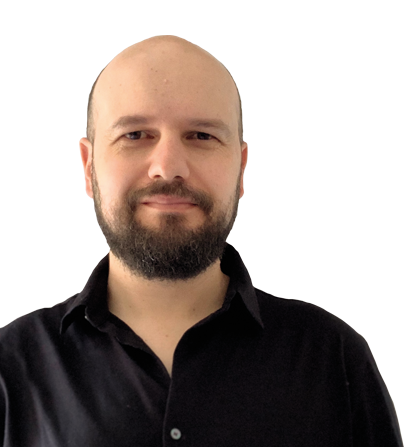Narco-esthetics, the superficial layer of a complex problem
By: Alejandro Ramírez Peña
Photos:
Economics and Politics

By: Alejandro Ramírez Peña
Photos:
The scourge of drug trafficking, with which a country like Colombia, or even Mexico for that matter, has been beset, perhaps much more than any other country in Latin America or the world, has deleterious effects in terms of violence, general lack of security in the streets, and attacks, in addition to the economic, social, and cultural impacts it has left, which are very difficult to erase from people, communities, cities, and nations that have to continue dealing with a problem that refuses to go away. Now it is even worse because the global demand for drugs is still very high.
Juan Pablo Aschner, dean, Faculty of Creative Studies, Universidad del Rosario, wanted to address this issue a few years ago but with a different perspective in relation to the space in which this illicit modality takes place.
Therefore, with the help of an architecture student, he began the investigation Narchitecture and drug depredation of rural and urban space in Colombia. As professor, Universidad de los Andes, he participated in a forum at Yale University (United States) on crime and space, in which he had the opportunity to present an analysis of the files of seizures made by the Dirección Nacional de Estupefacientes, DNE (National Narcotics Directorate), an entity that no longer exists and thefunction of which was to manage and rent the assets expropriated or received from drug dealers and front men. From that inventory of goods, he proposed to draw some conclusions.
According to Aschner, very alarming things emerged from this study in terms of the number of properties drug dealers had, the location, the nature (whether they were apartments, warehouses, businesses, or hotel infrastructure), and what these could reveal about the illegal behavior of this group.

Juan Pablo Aschner, dean, Faculty of Creative Studies, Universidad del Rosario, explains that criminal activities of the two countries are interconnected around drug trafficking and that they are, in some way, codependent, something that they were also able to identify in the spatial areas.
"That is, what we detected with the help of Luis Guillermo Rodríguez, a student with whom I worked at that moment, is that there was a correlation between the laundering and the management of those goods, regarding their outward appearance and legality, and the overall illegal and criminal behavior of drug dealers.
So that was the first instance at which I worked a few years ago, at a time when in Colombia they were also talking about narchitecture. At that time I had the intuition that this narchitecture was an esthetic phenomenon, above all, let us say a cultural phenomenon, but over time I realized that was not so true,” says Aschner.
There, he understood that narco-esthetics or narchitecture was just a very superficial layer of a much more complex problem. So he decided to find out and submitted to a call for the Center for Security and Drugs of the Universidad de los Andes, together with Professor Juan Carlos Montero, Political Science, Tecnológico de Monterrey (in Mexico).
“With him, we present a proposal to be able to look at the problem in a more comprehensive way, if a more systemic and holistic approach is wanted, articulated with the phenomenon in general. Once there, the investigation was expanded, so we had the collaboration of two students, Sioli Rodríguez and Ómar Campos, who helped us do an entire inventory of the work, a little deeper than what the space and geography of drug trafficking in Colombia and Mexico really is. So we could say there would be two stages of these backgrounds: One, in which we look at statistics of seizures in Colombia, specifically, and a second one, in which we expand the panorama to Mexico, and this took us a couple of years. In the first, we did all the research, entitled Architectures, spaces, and territories of illicit drug trafficking in Colombia and Mexico; in the second year, we did the writing, and we presented the work to the scientific journal Crime, Media, Culture, which finally published the article this year,” says Aschner.
In this work, the professor considers the main contribution made by him and his team as authors to be reconciling the issue of space, architecture, and geography with the social and economic phenomenon of drug trafficking as these two aspects are generally seen separately. And they reconciled them because they believe that from space the social issue can also be understood, deriving in public policy, but also in other research approaches. Likewise, he highlights that they tracked the chain and structure of the scourge of drug trafficking; that is to say, they started with crops and went on to analyze the different geographical spaces and the characteristics of these territories both in Colombia and Mexico.
In this sense, he highlights the importance of Juan Carlos Montero’s work in their understanding everything related to opiates’ behavior in Mexico as crops. While on the Colombian side, they worked on the issue of the coca plant, identified some characteristics of those geographies, why those crops were growing in certain territories, why they were located there and not in other parts of the country or countries, and what spatial characteristics were at stake in those crops.
Then, they observed another very interesting part related to laboratories: It was shown that those spaces have certain tactical peculiarities; that is to say, they are mainly hidden and adapted to be used for drug processing.
They identified what those laboratories were like and their typologies, and with the help of Ómar Campos, they built a 3D model of these. Later, they analyzed the trafficking, such as how those illegal drugs move around the world and what spatial and architectural mechanisms are used. They analyzed the narco- submarines and the narco-tunnels on the border between Mexico and the United States, structures that are designed in a tactical manner to mobilize drugs, and they drew up charts on which they managed to identify all the spatial scenarios in which drugs move.

“Here what we could see was a very complex network, a more transnational one, in which space played a very important role. There was a tactical and a spatial reading of the territory. Then, we also analyzed where the traffic was happening in that distribution phase; began to see asset- laundering spaces and narco-camps; and analyzed spaces of violence and even drug dealers' homes. We delved into how those sites had a very tactical layout and plan; when a drug dealer buys a property and modifies it, he is not doing it arbitrarily or naively, but, on the contrary, he is thinking very well on how he will eventually make good his escape from that good, or for example, how he is going to be able to control certain areas of the territory from there. So what we did was to follow all the space behavior throughout the phenomenon of drug trafficking,” explains the dean of the Faculty of Creative Studies of the Universidad del Rosario.
That way, they not only found similarities between Colombia and Mexico but also found what could be called a symbiosis or a synergy; that is to say, what happens in Colombia affects what happens in Mexico and vice versa. At this moment, he adds, criminal activities of the two countries are interconnected around drug trafficking, and they are, in some way, codependent, something that they were also able to identify in the spatial areas.
A very efficient economy
After the discoveries that impacted the team during this work, Aschner points out that the first thing is how impressively efficient this illegal economy is. It states that the fact that this economy is atomized into different fragments that work together makes it also tremendously effective. If this model is compared to a legal economy, this depends a great deal on its units. And when one of the units stops working, somehow it generates problems throughout the chain, while, if this happens in the illegal economies, the failing unit is replaced very quickly with another one.
“So what we see is a highly efficient illegal economy, also tactical, which is always reacting to persecution and adapting to the legal structures that seek to fight it. It is an economy that is very difficult to control because it is continually adapting to, and accommodating, the circumstances. That is scary and makes its pursuit much more difficult. The second learning that this research leaves me with is the demystified idea of narco-esthetics for the narco-structure; I think that is already overcome, that period—in the Colombian case, in the ‘80s and ‘90s—where we saw pompous architecture. That is no longer the case, but we are facing a surreptitious, inconspicuous phenomenon that is permeating all society, and that, in terms of architecture, behaves in an almost anodyne way,” he says.
Therefore, this indicates what we have today are architectural structures, spatial and geographic structures that are fully embedded within legal economies (operating in parallel with illegal ones) and that are very difficult to detect. Now, for example, there are underground laboratories; narco-submarines operating through transnational waters; tunnels through the borders; all kinds of coves, inventions, and artifacts; drug dealers living in very low-key apartments; and drug camps that go unnoticed in the jungles of the countries.
The researcher argues that the plans to prosecute drug trafficking does not cease and that, of course, the intensity of those chases corresponds to the momentum of the phenomenon in itself. But, as long as there is obvious demand, supply is not going to stop, so he claims that this is a latent and determining phenomenon for the two countries, one that affects Colombia and Mexico, and that it will not stop being like that until something is done to control the demand.
"As long as that is not done, we will continue to see the disaster this has represented in social, economic, and cultural terms to our countries; therefore it is not a minor issue. Nor do I agree with those people who intend to veto it, who mean 'Let us not talk about this, no more soap operas, no more shows, and no more movies'; I do not share that position. What we have to do is to accept that it is a reality and rather try to understand it for us to be able to face it. That is what we wanted to do with this research, and we were trying to understand a reality, not because we consider it a fashionable topic but because it is the most worrying scourge of our two countries,” he concludes.
Juan Pablo Aschner is the dean of the Faculty of Creative Studies, Universidad del Rosario, which started with the Musical Theater Program, and which, from 2021, will have others: Arts, Architecture, and Design. “They are programs that interact between them and in which students assemble the studies to suit them. They emphasize on learning through doing (active learning) and directly and continuously experimenting with concepts, techniques, and materials. Additionally, and thanks to an agreement with Artesanías de Colombia, students will know in depth the ancestral knowledge that make the cultural expressions from all regions of Colombia so rich and diverse,” says the dean.
The idea is that over time, this faculty is able to cover the entire spectrum of creativity, so it will have programs in all creative areas, including theater, music, dance, audiovisuals, narratives, architecture, arts, and design. "It is a new faculty, different from the local offer, but it is in tune with international practices related to these creative areas,” he adds.